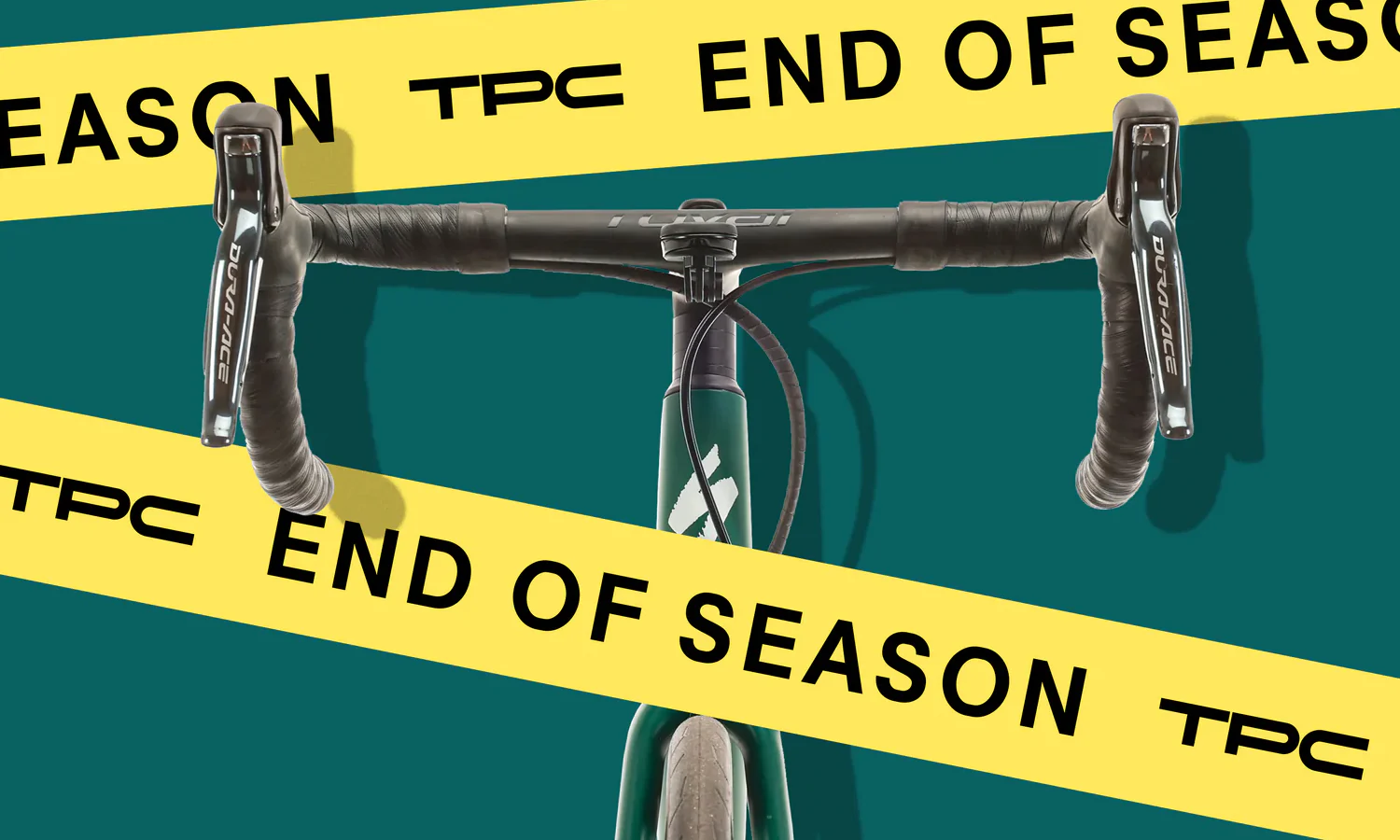Riding the Garmin Rally RS200. Photo: Garmin
For those in the know, there’s no question that power meters are essential for racers or any performance-oriented rider. (To learn more, check out our Beginner’s Guide to Power Meters.) However, many power meters require replacing a crank arm, a chainring, or in some cases, your entire crankset. There can be compatibility headaches, and if you want to put a power meter to multiple bikes, the cost and complication skyrocket.
There is a great solution though — power meter pedals. As the name implies, power meter pedals combine a power meter with clipless pedals. This means they’re no harder to install than standard pedals and they’re compatible with pretty much any bike. It’s also easy to swap them between different bikes. TPC carries all the top power meter pedal brands so you can pick the best option for you and your bike.
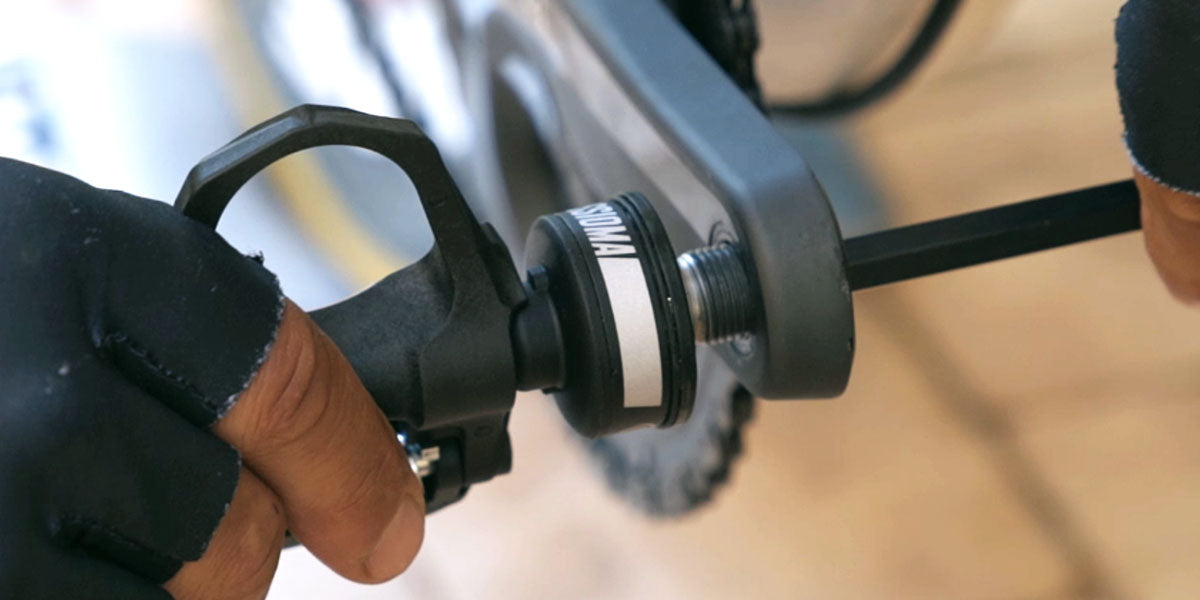 Installing Favero Assiomas. Photo: Favero
Installing Favero Assiomas. Photo: Favero
Power meter pedals have improved a lot in the last couple of years. They’re sleeker, lighter, and more reliable than ever. They’ve also become impressively accurate. All the models TPC carries have an accuracy of +/- 1% so you get a precise power measurement for all your training and race efforts.
Compared to crank-based and chainring-based power meters, the only real disadvantage of pedal-based power meters is that they usually have a max rider weight limit, and if you aren’t careful while riding, they can get scratched up or damaged.
Single-Sided vs. Dual-Sided Power Meter Pedals
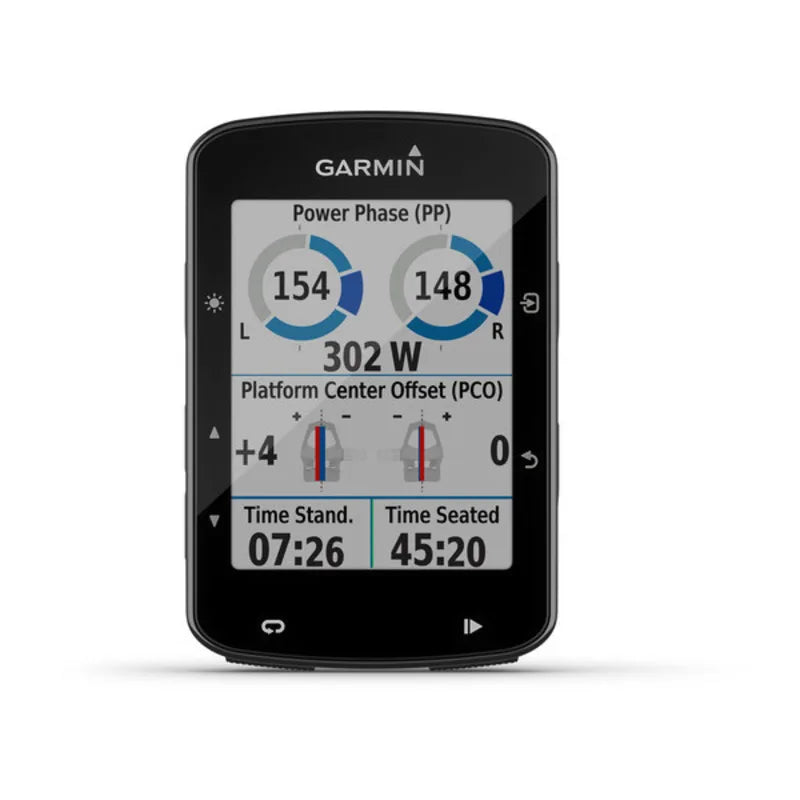 Showing left/right power balance. Photo: Garmin
Showing left/right power balance. Photo: Garmin
All the power meter pedals featured here come in both single-sided and dual-sided options:
- Single-sided power meters only measure the power coming from the left side/leg. This is then doubled to create a total power readout.
- Dual-sided power meters measure the power coming from both sides/legs to create a total power readout.
Single-sided power meter pedals are cheaper than their dual-sided counterparts. A single-sided power meter is more than good enough for the vast majority of riders. While a single-sided power meter only measures the power coming from one side, the most important thing for a power meter to do is to provide consistent power readouts that you can use for benchmarking, training, and pacing.
Dual-sided power meters provide the most accurate power data, which is great for riders who really sweat the details, but they also cost more. They also allow riders to measure their left/right power balance — the percentage of power coming from each leg.
While this is interesting data, it’s actually not that useful unless you have a pre-existing injury you’re rehabbing or a major leg length discrepancy. Almost no one has a perfect 50/50 power balance and slight imbalances aren’t really a concern. Another key consideration is that dual-sided power meter pedals need two batteries instead of one. Otherwise, dual-sided power meters are good for any rider that wants pro-level gear, or just a sense of symmetry.
Favero Assioma UNO & DUO Power Meter Pedals
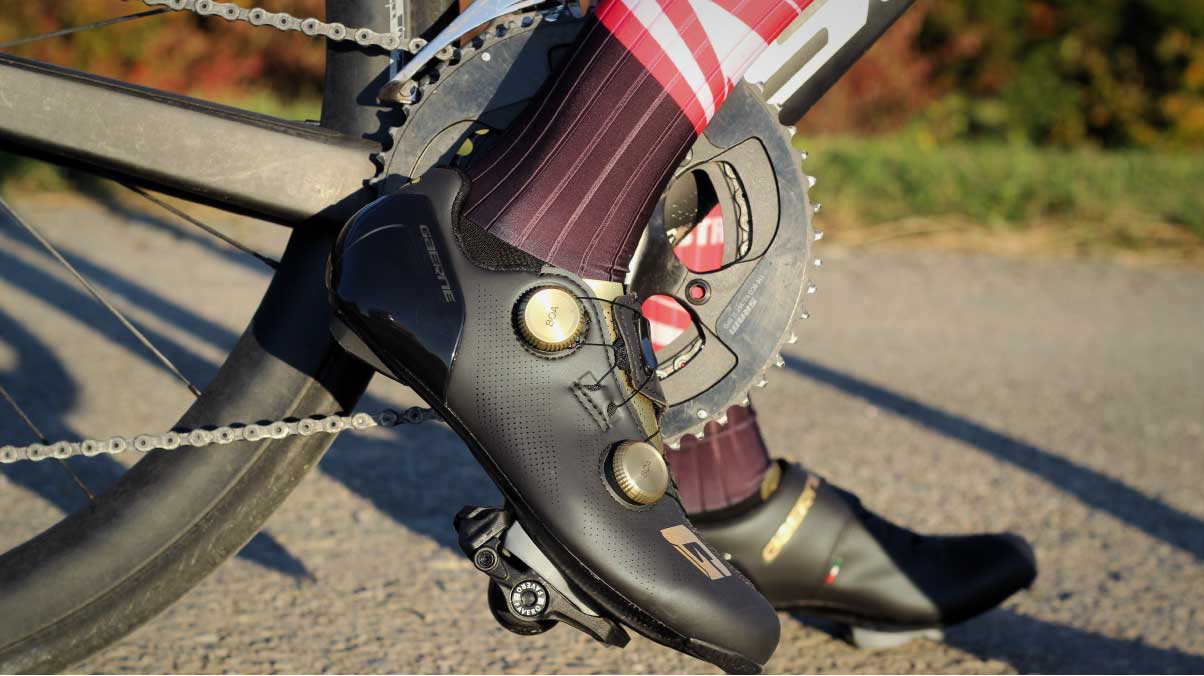 The Fevero Assioma DUO. Photo: Favero.
The Fevero Assioma DUO. Photo: Favero.

Favero Assioma UNO Single-Sided Powermeter Pedals
$495.00

Favero Assioma DUO Dual-Sided Powermeter Pedals
$759.00
Cleat type: Look Keo / Favero
Pedal weight: 303 g
Q-factor: 54 mm
Max rider weight: 265 lbs
Battery type: Rechargeable lithium battery
Battery life: At least 50 hours
Favero Assioma pedals have become the most popular power meter pedals on the market thanks to their affordable price and high accuracy. Favero is generally my first recommendation for anyone looking to add a power meter to their road (and maybe gravel) bike. They are the most affordable option and have the highest max weight limit of the three brands featured here. Based on users who have commented online about Favero, they also appear to be incredibly reliable.
 Charging Favero Assioma pedals. Photo: Favero
Charging Favero Assioma pedals. Photo: Favero
The only downside to the current Favero Assioma is the large “pod” on the pedal spindle which contains the rechargeable battery. Some riders don’t like the aesthetics of the pods, and there can be a bit of rub for those with wide feet. They also have the shortest battery life.

Favero Assioma DUO-Shi Dual-Sided Powermeter Pedals
$625.99
There is also an option for those who don’t want to give up their Shimano SPD-SL pedals. The Favero Assioma DUO-Shi spindles can be installed in Shimano PD-R8000, PD-R7000, PD-6800, PD-R550, and PD-R540 pedals, transforming your Shimano pedals into a power meter with only a mild q-factor increase.
Garmin Rally Power Meter Pedals
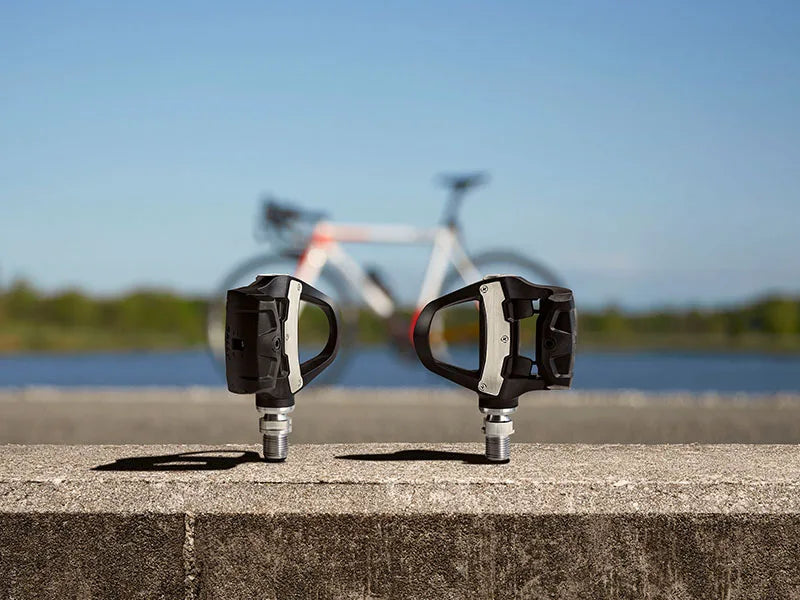 The Garmin Rally RS200. Photo: Garmin
The Garmin Rally RS200. Photo: Garmin

Garmin Rally RS100 Single-sensing Power Meter Pedals
$649.99

Garmin Rally RK200 Dual-Sensing Power Meter Pedals
$1099.99
Cleat type: Look Keo (RK100 & RK200) / SPD-SL (RS100 & RS200)
Pedal weight: 326 g
Q-factor: 53 mm (55 mm with provided 2 mm washer)
Max rider weight: 105 kg (231 lbs)
Battery type: LR44/SR44 (x4) or CR1/3N (x2)
Battery life: Up to 120 hours
Garmin was one of the first to offer power meter pedals with its groundbreaking Vector pedals. Years later, it has now been replaced with the next generation Rally pedals. These have been slimmed down significantly and when compared to Favero Assiomas and Wahoo POWRLINKs, the biggest difference is that the Garmin Rally pedals don’t have a visible “pod” on the axle. They essentially look like normal pedals.
Garmin Rally pedals also have the longest battery life and instead of a rechargeable battery, they use replaceable LR44 coin batteries, which are easy to find in many grocery stores and gas stations. There are also two different versions compatible with Look Keo (RK100/200) and Shimano SPD-SL (RS100/200) cleats.
Unlike the Faveros, the Garmin Rally pedals will require an old-school 15mm pedal wrench to install rather than a standard hex wrench. A potential downside is that Rally pedals do have the lowest rider weight limit, so keep that in mind.

Garmin Rally XC100 Single-Sensing Power Meter Pedals
$699.99

Garmin Rally XC200 Dual-Sensing Power Meter Pedals
$1199.99
Cleat Type: Shimano SPD
Weight: 455 g (single) / 448 g (dual)
Q-factor: 53 mm (55 mm with provided 2 mm washer)
Maximum rider weight: 105 kg (231 lbs)
Battery type: LR44/SR44 (x4)
Battery life: Up to 120 hours
Garmin even offers an SPD version of the Rally for mountain and gravel bikes. Like the road version, these use replaceable LR44 coin batteries and require a 15mm pedal wrench to install.
Wahoo POWRLINK Power Meter Pedals
 The Wahoo POWRLINK. Photo: Wahoo
The Wahoo POWRLINK. Photo: Wahoo

Wahoo POWRLINK Left Sided Power Pedal Clipless Black
$649.99

Wahoo POWRLINK: ZERO Dual Sided Power Pedal Clipless Black
$789.99
Cleat Type: Speedplay
Weight: 250 g (single) / 276 g (dual)
Q-factor: 55 mm
Maximum rider weight: 250 lbs
Battery type: rechargeable lithium battery
Battery life: Up to 75 hours
If you’re a fan of Speedplay pedals, then Wahoo’s POWRLINK pedals are the only option for you. Because they’re based on the classic Speedplay body, these are the lightest power meter pedals and they also claim to be the most aero.
In general, Speedplay cleats also have the most adjustability for riders who are particular about setup or who need to compensate for different physical limitations or injuries. There's plenty of fore-aft adjustment and they can provide between 0-15 degrees of float.
Like the Favero Assiomas, POWRLINK pedals have a “pod” on the spindle containing the rechargeable battery, which can cause clearance issues for some riders. Wahoo claims to have longer battery life than Favero.


